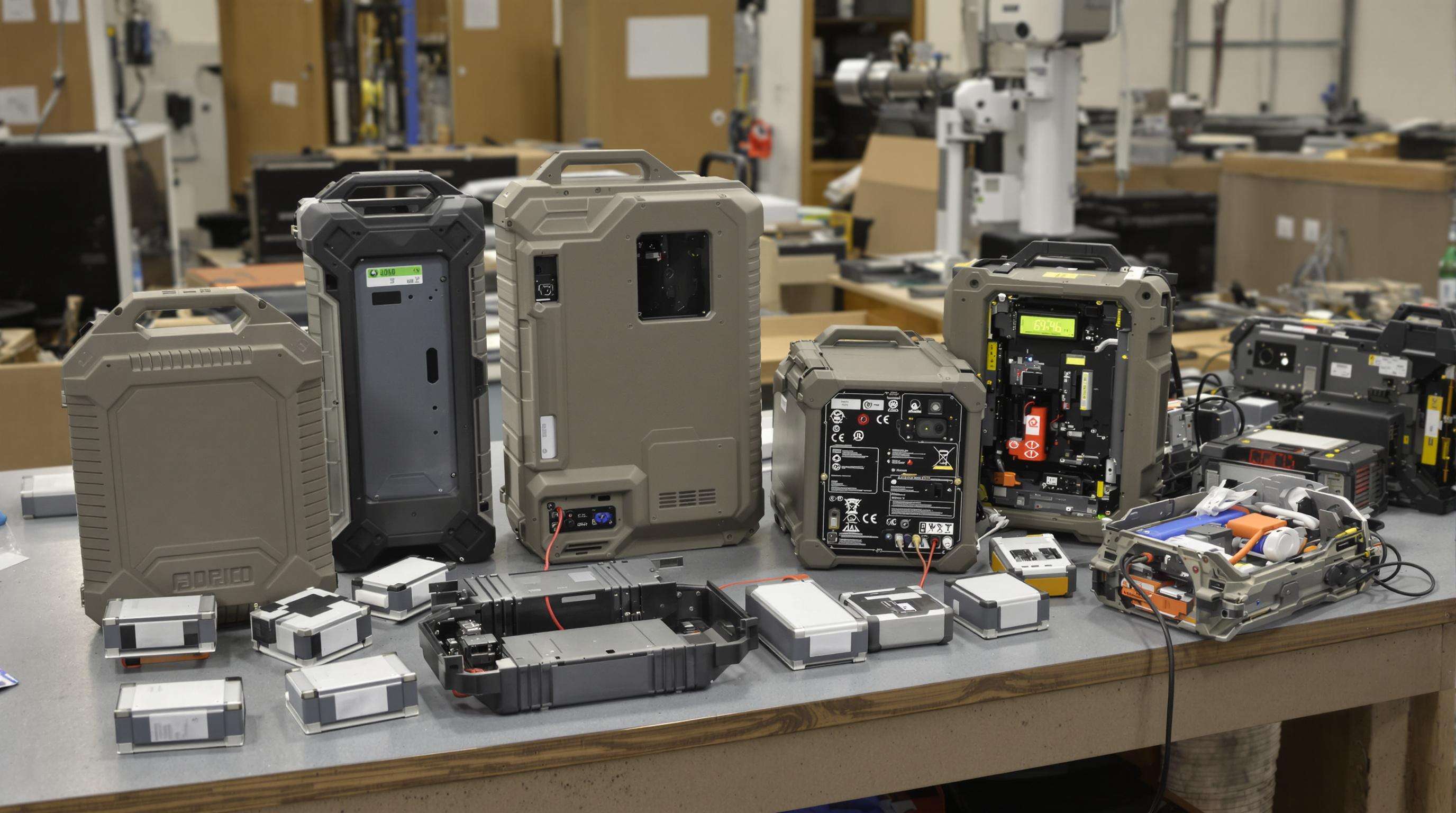The portable power supply market is changing fast these days. According to LinkedIn's 2023 report, industrial IoT adoption could hit over 70% by 2027. We're seeing all sorts of connected devices popping up everywhere from hospitals to server farms and even military bases. This explosion of smart tech has created a real need for power options that work well in different situations. Take a look around and what do we find? Tiny battery packs for people who travel constantly with their laptops are sitting right next to heavy duty systems that keep factory robots running smoothly. Makes sense when you think about how varied our energy demands have become across industries big and small.
Businesses prioritize seamless integration with existing infrastructure, while consumers seek lightweight designs with multi-device charging capabilities. The U.S. government’s $100 billion energy infrastructure investment in 2023 underscores the strategic importance of tailored power solutions in national energy resilience plans.
A renewable energy provider recently deployed modular power stations across 50+ off-grid sites, achieving a 40% reduction in generator dependency during peak operations. This implementation demonstrates how scalable battery configurations and intelligent load management can address critical energy gaps in remote locations.
Modern units now incorporate touchscreen interfaces showing real-time consumption metrics and automatic device recognition technology. These features enable optimal energy allocation, particularly valuable for emergency response teams requiring instant compatibility with diverse medical equipment during field operations.

According to EnergyTech 2023 research, modular portable power systems meet about 89 percent of what businesses actually need when it comes to flexible energy options. These systems let people put together different battery setups based on exactly what they require in terms of voltage levels, storage capacity, and physical size. The whole concept behind this approach means companies don't have to buy several specialized devices anymore. Instead of purchasing individual units for each task, businesses can save money too, cutting expenses down somewhere around 32% in many cases. Plus, these systems offer much better flexibility when deploying equipment across various locations. With tough connectors and consistent voltage controls built right in, the modules work either alone like regular power banks or connected together as bigger power arrays. They're particularly useful at things like music festivals where lots of electricity is needed temporarily, but also come in handy for doctors working in remote areas who need reliable power sources for their medical equipment.
Today's modular systems come with battery packs that can be swapped out without tools while keeping everything running - something that matters a lot to people working in emergencies or managing telecom networks. According to some field testing done last year, companies that switched to these expandable modules saw their systems stay online around 94% of the time when deployed far from main power sources, versus only about 76% reliability with those old fixed capacity batteries. What makes this even better is the cross compatible charging stations available now. These let workers plug in solar charged modules right alongside regular grid powered equipment without any issues, which saves money and keeps operations going smoothly no matter what kind of weather rolls in.
A 2023 Arctic research expedition demonstrated modularity’s operational impact. Scientists combined four 1kWh battery modules with a 300W solar panel array, creating a scalable system that:
The setup maintained continuous power for sensitive monitoring devices despite temperatures plunging to -40°C, validating modular systems’ extreme-environment capabilities.
Leading manufacturers adopt three principles for scalable portable power supply design:
This approach ensures today’s 500Wh modular power station can evolve into a 5kWh system through incremental upgrades, protecting organizations from technological obsolescence.
Today's portable power supplies can handle between five to eight devices at once thanks to clever combinations of old school USB-A ports rated for 12 watts, newer USB-C Power Delivery ports capable of 100 watts, plus those handy 15 watt Qi wireless charging spots. According to recent industry research, around seven out of ten people look for power banks that work with multiple standards these days. Makes sense really, since most households have about three point two devices per person nowadays. Some interesting ways manufacturers are putting all this together include...
Leading manufacturers eliminate cable management challenges by embedding retractable USB-C and Micro-USB cords and magnetic Apple Watch chargers within the power bank housing. This design reduces accessory weight by 40% while maintaining IP54-rated durability for outdoor use.
Advanced portable power systems employ auto-sensing ICs that detect connected device types within 0.3 seconds, allocate optimal wattage per port (5–20V dynamic adjustment), and prioritize power delivery to critical medical or military equipment—ensuring efficient, safe charging without user intervention.
Ruggedized portable power supply units for construction and emergency response teams feature:
These compatibility enhancements align with the 89% year-over-year growth in customized portable power adoption across telecom, healthcare, and defense sectors.
According to the Power Systems Innovation Report for 2024, around three quarters of industrial manufacturers are looking for portable power supplies these days that come with their own branding and can scale up as needed. The reason behind this trend is pretty straightforward really manufacturers want all their equipment running on the same power standards but still need some flexibility in how things operate day to day. Companies across telecom and construction industries now expect their power units to look tough on the outside with company logos prominently displayed, plus they want them configured specifically for different voltages too. These features aren't just nice to have anymore they're basically table stakes in many business environments today.
Modern 3D printing and modular PCB design enable functional prototypes within 72 hours—a 53% reduction compared to traditional methods. This acceleration allows enterprises to validate thermal management systems, test compatibility with legacy equipment, and optimize weight distribution for field-deployable units before full-scale production.
A European rail operator reduced maintenance costs by $290k annually after adopting proprietary battery replacements engineered for its 15-year-old inspection drones. The OEM-designed power packs achieved:
| Metric | Improvement |
|---|---|
| Charge cycles | +400% |
| Cold-start reliability | 98% success |
| Weight reduction | 22% |
Forward-thinking manufacturers partner with ISO-certified prototyping labs to develop exclusive power architectures. This collaboration reduces R&D risks and ensures intellectual property protection—critical for deploying mission-critical systems in regulated industries like aerospace and healthcare.

Modern portable power solutions require materials that withstand harsh conditions without adding bulk. Reinforced polymers and aluminum alloys dominate industrial-grade designs, providing impact resistance while keeping units under 15 lbs. Over 80% of industrial users now prioritize IP67-rated waterproofing and military-grade drop protection in their specifications.
Advanced thermal management systems prevent catastrophic failures in custom portable power supply units. Temperature-sensitive charge controllers automatically reduce output during overheating, while fire-retardant battery housings contain thermal runaway events. Industry leaders implement three-layer safety protocols:
The portable power industry faces mounting pressure to address lithium-ion waste, with 78% of recycled batteries losing capacity after three years. Emerging solutions include:
| Innovation | Impact |
|---|---|
| Modular cell replacement | Extends product lifespan by 40% |
| Cobalt-free chemistries | Reduces mining dependency by 65% |
| Closed-loop recycling | Recovers 92% of raw materials |
Manufacturers achieve equilibrium through adaptive firmware that optimizes energy output based on ambient conditions and battery health. This approach reduces unnecessary power drain by 30% while maintaining critical safety margins, proving durable portable power solutions don’t require compromises in ecological responsibility.
Modular power systems offer flexibility in configuring energy options tailored to specific needs. They reduce costs by eliminating the need for multiple specialized devices and facilitate easy deployment across various locations.
Smart displays provide real-time consumption metrics, while device recognition ensures optimal energy allocation, enhancing compatibility and efficiency in diverse operational settings, such as emergency response.
Reinforced polymers and aluminum alloys are favored for industrial-grade designs due to their impact resistance and lightweight properties, crucial for reliability in harsh conditions.
Collaborations with ISO-certified labs for exclusive power designs and rapid prototyping services enable manufacturers to optimize designs, validate systems, and protect intellectual property for enterprise-grade solutions.
 Hot News
Hot News2025-02-25
2024-11-27
2024-12-17